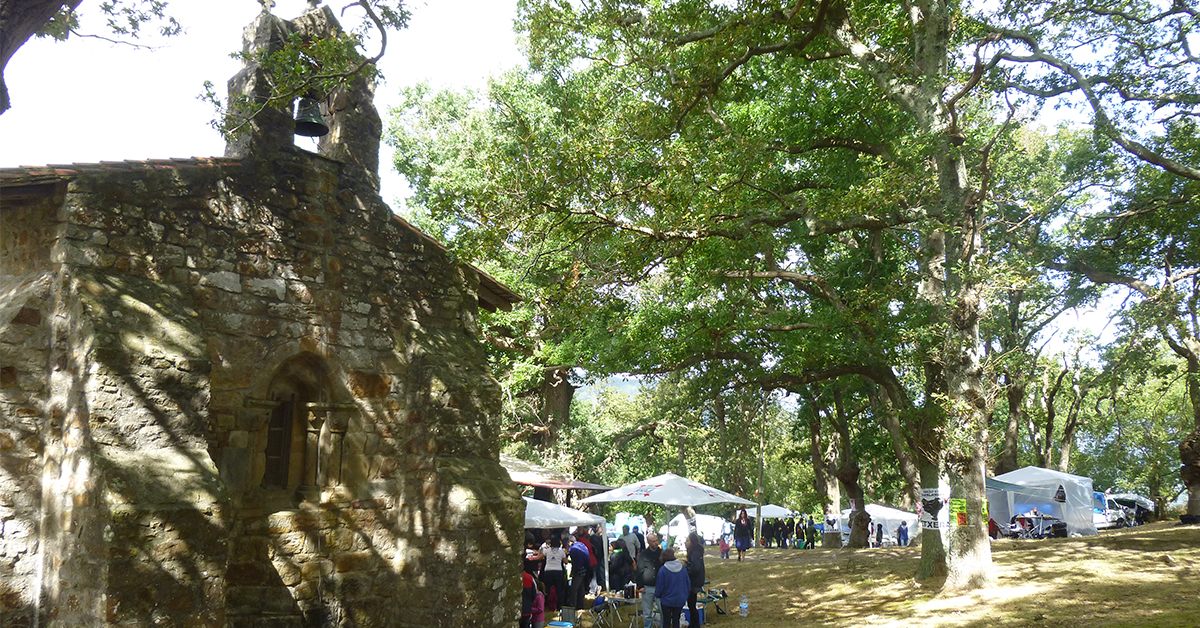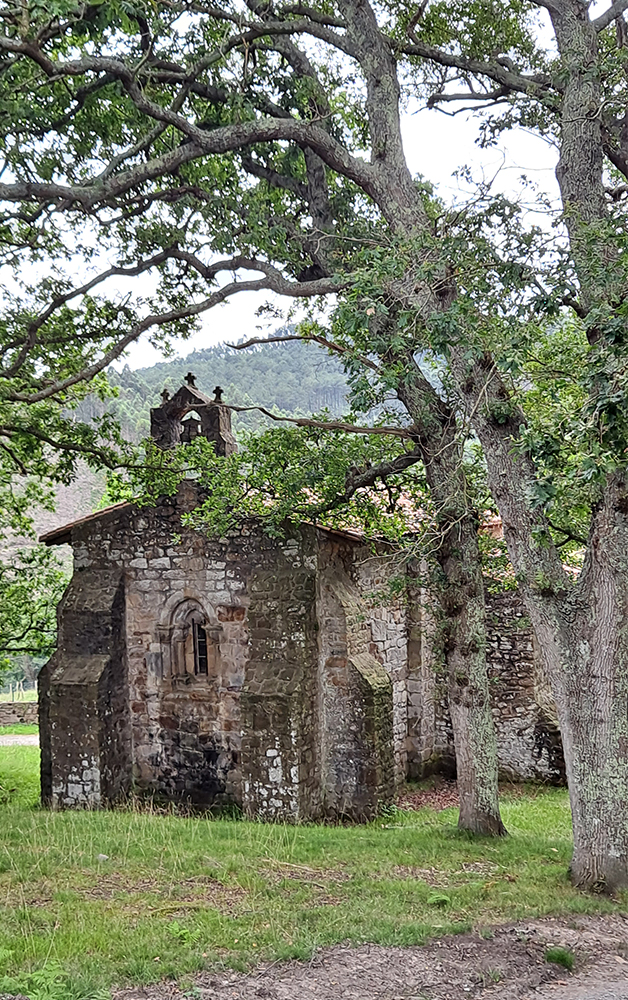Basque ethnography at a glance
Hidden on one of the hills that span the eastern slopes of Mount Jata, the chapel of St. Michael of Zumetzaga stands in an isolated and mysterious setting. Ancient oaks, chestnut trees and the odd age-old holm oak provide the shade protecting this simple, but historically important chapel; it is believed to date back to the end of the 12th century and is in the late Romanesque style. The Zumetzaga farmstead, the guardian of this gem, can be found beside it.
The chapel faces east and is a modest building, consisting of a single rectangular nave, ending in a almost square apse. This is shored up by sturdy buttresses outside that give a peculiar look to the building. All the walls, along with the vaults, are in stone masonry and there is only an opening on each façade. Three of them are entrances, and there is a small window in the chevet which lets in the little light to the dimly lit chapel. That, and the south-facing door, are the most interesting features of the building.
It is bordered by a path that runs gently south down towards Markaida and Larrauri, while it steeply descends to Bakio to the north. That route was previously very important, as the Zumetzaga path was the only means of communication between Bakio and Mungia until the present road was built.
There is an old popular belief, that was very widespread back in its day, that the dignitaries of Bakio and Mungia decided to end the problem of having no clearly defined common boundary once and for all. The people of Bakio were happy as they had convinced their neighbours to try and solve the problem by agreeing on where the boundary stones (munarriak) should be placed, without involving the courts or lawyers. As Bakio was a small town, they thought they could use that as an opportunity to increase its territory.
When the agreed day arrived, they groomed and loaded two donkeys with large amounts of food and drink to treat the people from Mungia to a real feast. They set off happily and optimistically towards Zumetzaga and were convinced that they would be able to easily obtain the result they wanted. Just after starting the steep section of the path, and as they were already tired and thirsty, they decided to stop to get their strength back. As they were confident about their advantage of having a much short distance to travel than their Mungia neighbours, they took a break at several spots along their route.
The people from Mungia, walking at a good pace and with no breaks, reached the chapel at the agreed time. As there was nobody there, and after waiting a good while, they decided to continue towards Bakio to look for its representatives.
They finally found the Bakio delegation who very kindly offered them different types of food and drink. The Mungia dignitaries gladly enjoyed their neighbours’ famous txakoli wine. After several hours of chatting and singing, somebody realised that it was beginning to get dark and they still had not settled the problem. Under the circumstances, the Mungia delegation proposed using the little light left to begin to place the boundary stones from that very spot. The poor Bakia delegation had no other option than to accept, as night was closing in and they were not up to walking further or to start negotiations. Each delegation began to place the boundary stones from there, which meant that Zumetzaga and Emerando would from then onwards belong to Mungia for ever.
Even though the Bakia delegation must have been shamefaced on their return, they repeatedly laid claim to achieving an agreement without arguments or disputes. The reality is that they had failed in their goals, but had had a wonderful time at a personal level.
On 29 September, the feast day of St. Michael will be celebrated in Zumetzaga yet again. Mass will be said in the chapel, followed by bertsolaris (Basque poets improvising verse), Spanish omelette contests, different games and a popular pilgrimage in Zumetzagako landa, the area around the chapel. People from Mungia, Larrauri, Bakio, Emerando and other nearby villages will meet up in this beautiful spot; they will forget, for a day, about the boundary stones around the area and enjoy marking such a special date as friends.
Zuriñe Goitia – Anthropologist



